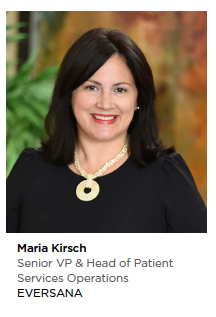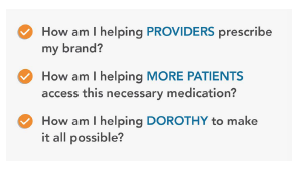 Meet Dorothy: mother of twin 12-year-old girls who inherited her natural talent and love for tennis. Every weekend she coaches their junior team and analyzes each match on their way to get pizza. Dorothy thrives on the tennis court next to her girls; she feels energized and empowered.
Meet Dorothy: mother of twin 12-year-old girls who inherited her natural talent and love for tennis. Every weekend she coaches their junior team and analyzes each match on their way to get pizza. Dorothy thrives on the tennis court next to her girls; she feels energized and empowered.
Monday mornings, on the other hand, don’t have the same effect on her. Three weeks away from reaching her two-year anniversary of being the office manager of Riverside Pediatric, she pulls into the office parking lot precisely one hour before the first appointment. She’s hoping to get a head-start on the day’s task list. A quick glance over to the office’s gray door and her mind takes off like a freight train:
Call the specialty pharmacy to check the status on young Edward’s prescription — he should have received his medication three days ago, and his mother already called twice to check on the status.
Touch base with Jenn — did she schedule Mrs. Kline’s daughter’s consult? I really hope she doesn’t have asthma.
Calculate the final tally of cancellations last month — did it improve from the previous month? Dr. Nguyen is going to have a fit if we lose any more patients.
In a busy pediatrics office with three providers, Dorothy provides support for more than 50 patients per day. From the time a prescription is written to the day the patient begins treatment, she is responsible for managing their health insurance journey for each medication. Each one requires their own benefit verification process, enrollment program, payment option, and distribution channel.
Between patient care and office management, Dorothy is responsible for:
Calling insurance companies.
Completing and submitting paperwork.
Verifying the status of prior authorizations.
Calling patients about medication status.
Rooming patients.
Answering inbound calls and triaging patients.
Requesting and confirming refills.
Getting medication to patients is a never-ending cycle that cuts into her main responsibilities: patient care and office management. Dorothy never feels caught up. Normally, she can muster enough strength to power  through, but lately she is overwhelmed. Back inside the car, her body tenses with every new task, physically holding her back from opening the door. “I don’t think I can I do this job much longer," she quietly says to herself.
through, but lately she is overwhelmed. Back inside the car, her body tenses with every new task, physically holding her back from opening the door. “I don’t think I can I do this job much longer," she quietly says to herself.
Patient Services Programs Are Falling Short
To give credit where credit is due, pharmaceutical manufacturers make a tremendous — and well-intended — effort to alleviate the product access obstacles and burdens patients and providers often endure when a new medication is prescribed. While interactive wellness apps, generous co-pay card offerings and essential patient assistance programs help a brand appear “patient-centric" and “easy to prescribe," these programs fall short on the back end. Complex business rules and lengthy intake forms, coupled with progress notes and medical history documentation, are creating mountains of paperwork and dozens of phone calls. The worst part of this reality? It’s completely avoidable.
As you evaluate your own patient services program for an upcoming launch or your 2021 brand strategy, I urge you to ask yourself:
How am I helping providers prescribe my brand?
How am I helping more patients access this necessary medication?
How am I helping Dorothy to make it all possible?
At EVERSANA, we deliver a standardized process enabled by a single integrated platform that connects prescribers, payers, pharmacies (retail and specialty), and manufacturers to provide real-time visibility into insurance benefits, patient support programs, timing of delivery/pick-up, and associated costs to patients. Sitting on top of the latest technology to safely and securely capture specific payer requirements and individual patient data, EVERSANA’s platform ensures the quickest route to patient access with minimal steps and fast, two-way flow of communication.
Patient services programs need a refresh to deliver a better brand experience and increase speed to therapy. Here are three proven ways to be THE BRAND doctors eagerly prescribe, office managers easily manage benefits, and patients stay adherent:
1. Leverage Artificial Intelligence (AI), Machine Learning, and Data and Analytics to Improve the Patient Journey
Of all product launches, 66% do not meet expectations.1 With increased competition, complex patient behaviors and higher operating costs, patient services programs now demand integrated data and analytics across the patient journey to model value-based care. More importantly, manufacturers need to implement behavioral interventions to increase patient adherence. By leveraging the power of AI and machine learning, we can identify where the patient is in their treatment journey and maintain engagement throughout each stage. Through unexpected trends and patterns, manufacturers can then predict the next best action and probability of nonadherence to provide effective corrective actions.
2. Establish Process Automation to Streamline Workflows
Prescription abandonment is often caused by complexity, financial constraints or unfamiliarity of affordability programs. Manufacturers can deploy an affordability program model that streamlines co-pay claims processing, benefit verification and prior authorization handling. For patient assistance programs, secure websites can be utilized for “self-serve" patient submission that automates the intake process, provides instant eligibility determination and uses e-signature to confirm patient approval. Investing in digital solutions will not only eliminate providers’ and office managers’ burdens; it will increase speed to therapy and ensure every prescription is managed properly.
3. Utilize a Specialty Pharmacy to Get Therapy to Patients Faster
Whether your product is a brand, generic or specialty therapy, consider offering direct-to-patient dispensing through a specialty pharmacy.
Convenient, dependable and fully customizable, direct-to-patient dispensing enables you to manage the patient experience right out of the box.
Additionally, specialty pharmacy teams routinely connect with patients to ensure compliance, assist with reimbursement and issue refill reminders.
Fortunately for all of us, Dorothy’s passion to help patients keeps her going, even on those dreadful Mondays. But her sheer willpower — I’d go so far to call it a superpower — shouldn’t be her only crutch. She should be able to depend on us to provide a best-in-class experience that allows her the bandwidth to care for her patients.(PV)
Source: 1. Ten years on: Measuring the return from pharmaceutical innovation 2019. Deloitte Center for Health Solutions. Beyond the storm: Launch excellence in the new normal, McKinsey & Company.
EVERSANA is the leading provider of global services to the life science industry. The company’s integrated solutions are rooted in the patient experience and span all stages of the product lifecycle to deliver long-term, sustainable value for patients, prescribers, channel partners and payers. The company serves more than 500 organizations, including innovative start-ups and established pharmaceutical companies to advance life science solutions for a healthier world.
For more information, visit eversana.com.
















